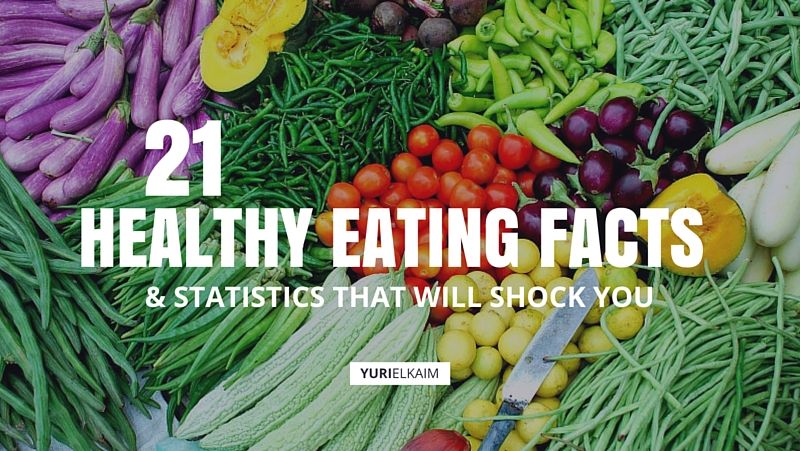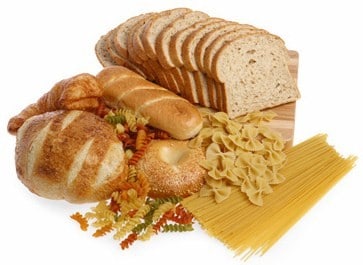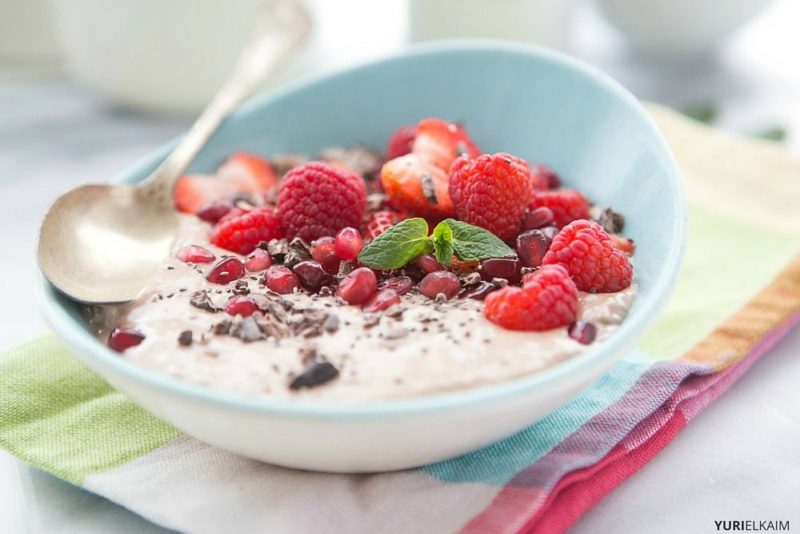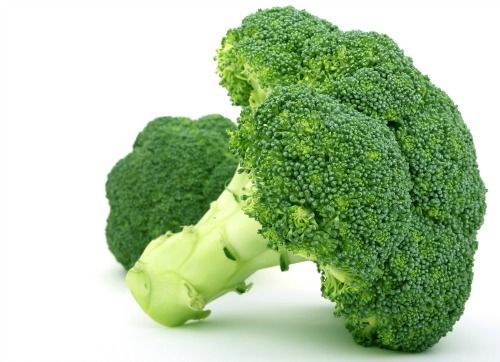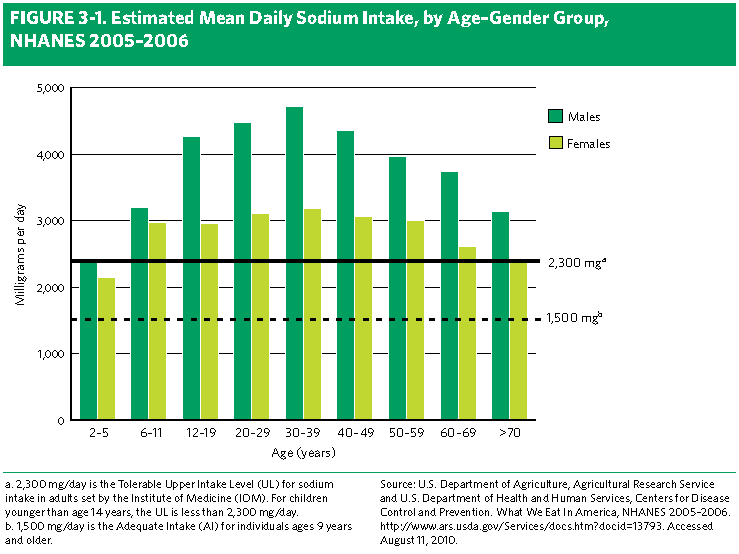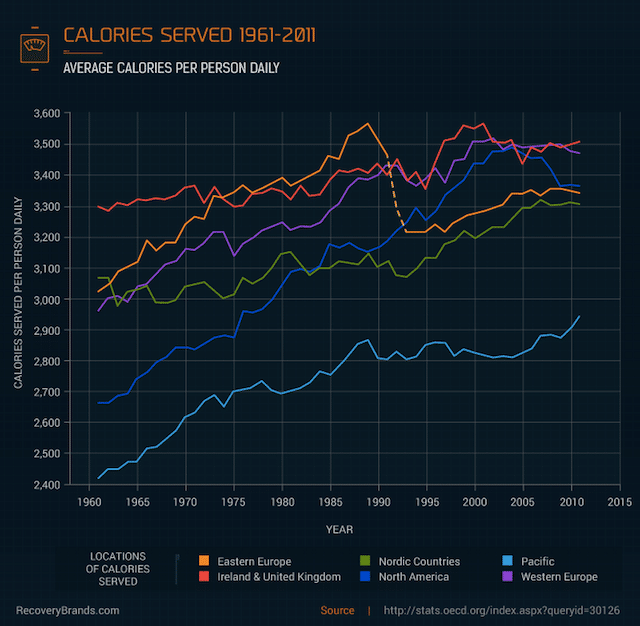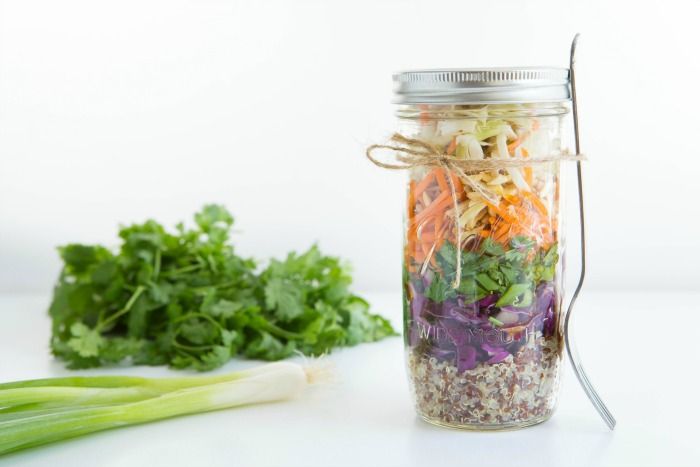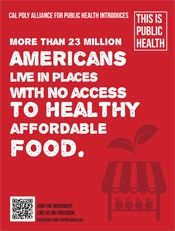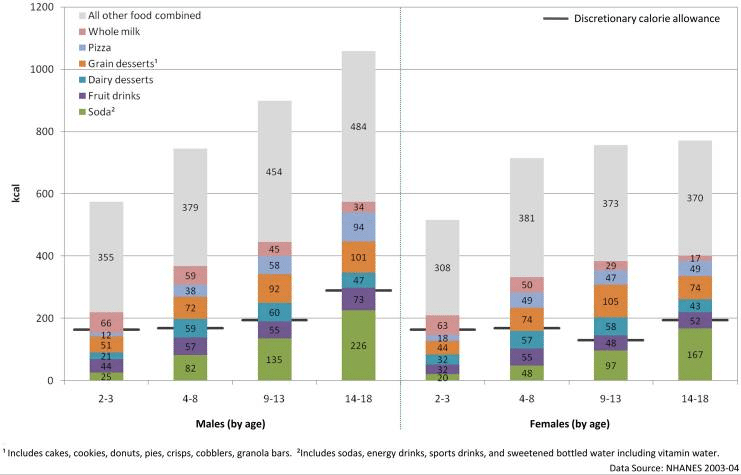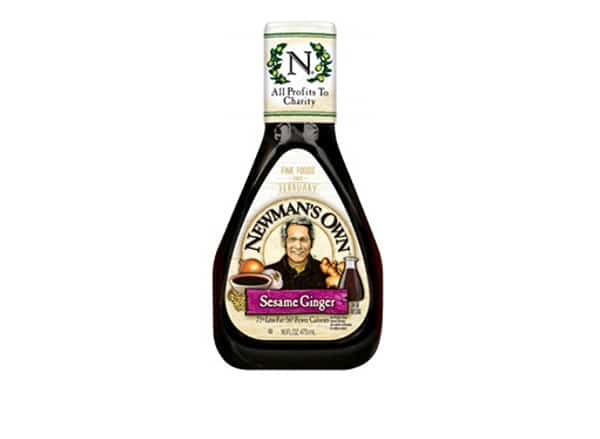Every day it seems we are bombarded with new health information.
And that information seems to be constantly changing – in fact, the difference between what we believed a few decades ago about nutrition and what we know now is staggering.
In the swirl of the latest-and-greatest health news, how do you know what to believe?
Even though the media has better awareness now about what constitutes “healthy eating,” we’re still flooded with myths and marketing gimmicks that lead us to believe destructive ways of eating are actually healthy.
On top of the nutrition myths, a number of factors – among them, convenience, lifestyle choices, and stress – also influence the healthy eating facts and statistics we’re about to uncover.
In this blog post, I’ll explain why these nutrition facts and statistics matter to you, and offer some nutrition tips and other actions you can take to prevent them from damaging your long-term health.
21 Shocking Healthy Eating Facts and Statistics
1. Our diets are overloaded with sugar, salt, and unhealthy fats and grains.
It’s true: the average American diet exceeds the daily recommended intake of sugar, refined grains, sodium and saturated fats (1).
Why This Matters to You:
All of the “foods” listed above contain too few nutrients to even be considered foods. Sugar, refined grains, sodium, and saturated fat all have properties that can negatively impact the body and cause serious damage to our organs when eaten frequently.
For example, refined sugar and processed grains erratically spike and crash blood sugar levels, which can drain your energy or lead to long-term blood sugar problems such as diabetes.
Sodium is an electrolyte needed by the body, but in very moderate amounts. Too much sodium can result in water retention and lead to more serious complications, such as hypertension (2).
Since sodium is added in such excessive amounts to many of the foods we eat today, it’s not difficult to exceed our daily recommended intake.
What You Can do Instead:
‣ Avoid the middle aisles of grocery stores (shop in the produce aisles instead).
The middle aisles of grocery stores are where processed foods live. And if you take a look at the nutrition labels of processed foods such as chips, cookies, candy, commercially prepared granola bars, and crackers, you’ll find they almost always made from refined grains, added sodium and contain more than 6 grams of refined sugar per serving.
Instead of visiting the land of processed foods, it can help to make your way around the outer aisles of the grocery store where the fresh fruits, vegetables and other nutrient-dense foods are located. This will help avoid temptation and fill your cart with foods that are free from refined sugar, sodium and refined grains.
[Related: 15 No-Bake Energy Bites That Are Actually Good For You]
‣ Plan ahead.
One of the reasons we consume processed foods is because they’re convenient.
If you barely have time to get dressed in the morning, it’s more than likely that you’ll be making a mad dash out the door before even thinking about breakfast. Unfortunately, this is the way many people’s lifestyles operate, which leads them to grab the most convenient snacks and meals, not always the most healthy ones.
Since most of the convenience foods found in bakeries, coffee shops and restaurants contain refined sugar, processed grains, saturated fats, and sodium, we can easily increase our daily intake of these “anti-nutrients” without even realizing it, which eventually adds up to poor health.
Chocolate Chia Seed Pudding
Planning ahead by setting aside one hour each week to prepare a few healthy snacks from nutrient-dense ingredients (such as green smoothies, chia seed pudding or roasted chickpeas) can greatly help reduce your consumption of foods that contain these harmful ingredients to health.
‣ Hold the salt and the bread (ask for extra veggies instead).
Sure, there will still be times you’ll want to eat at a restaurant or visit your favorite breakfast joint.
To prevent exceeding your daily recommended intake of sodium and refined grains, request that no salt be added to your dish (avoid brines and marinades, which are often high in table salt) and skip out on the bread that’s typically offered with a meal. If possible, ask for extra vegetables or a small side salad.
2. We don’t eat enough vegetables, fruits, and healthy fats.
The corollary of the statistic above: the average American eats less than the recommended daily intake of healthy fats, fruits and vegetables (1).
Why This Matters to You:
Fruits and vegetables are among the richest sources of the essential nutrients – including vitamins and minerals – we need to function. Without vitamins and minerals, our body wouldn’t have healthy cells, an immune system, or even the ability to breathe.
Healthy fats, such as omega 3 and omega 6 essential oils, are another important macronutrient that aid in digestion and form the building blocks of healthy cell membranes. Healthy fats can also help support cognitive function and mental focus (3).
What You Can Do Instead:
Increase your fruit, vegetable and healthy fat intake by:
- Tracking your meals in a food journal to see how often you’re consuming fruit, vegetables and healthy fats.
- Setting a goal to drink one green smoothie each day.
- Choosing wild caught salmon over other animal products, such as chicken.
- Use a healthy fat such as avocado oil or coconut oil to cook with.
- Adding half of an avocado or 3 tbsp of hemp hearts to your green smoothie each day.
3. Almost all of us consume more sodium than recommended.
That’s right: some 90 percent of Americans take in more sodium than health experts recommend for a healthy diet.
They estimate that reducing the sodium consumed by 1,200 mg per day could save up to $20 billion a year in medical costs (4).
Why This Matters to You:
Sodium is not healthy in large quantities – and excessive amounts can lead to serious (and costly) cardiovascular problems, such as heart failure and premature death (5).
What You Can Do Instead:
The best plan of action to reduce your sodium intake is to:
- Avoid processed foods such as chips, french fries, and pretzels. Salted nuts should also be avoided.
- Avoid adding table salt to the meals you prepare at home. Instead, swap table salt for a high quality Himalayan rock salt or Celtic sea salt and use sparingly.
- Drink plenty of pure, filtered water each day to flush excess sodium out of your system.
- Reduce your sodium intake by replacing high-sodium processed foods with fresh fruits, vegetables, lean protein, and healthy fats.
- Limit eating at restaurants, which are notorious for adding large quantities of salt to dishes.
- Avoid high sodium sauces such as soy sauce or oyster sauce.
- The single best way to reduce your sodium intake is to prepare as many of your meals at home as possible, from fresh, whole food ingredients. This way you can control the amount of sodium that ends up in your diet.
4. We eat 600 more calories a day than we did in 1970 (1).
Why This Matters to You:
I like to note that calories aren’t always the problem – it’s the source of the calories that matters most.
And while each age and life stage will require a specific minimum number of calories each day, it’s all too common now to over-consume calories based on the amount of processed empty calorie foods available to us, like cookies, fancy coffee drinks, ice cream, and fast food.
Besides, the foods that are best for you (such as fruit, vegetables and lean protein) are naturally very low in calories, which makes it hard to exceed your daily recommended caloric intake.
Consuming extra calories from junk food is the quickest way to promote obesity and put stress on your internal organs, which can cause serious health complications down the road.
What You Can Do Instead:
The best way to reduce your caloric intake is to avoid “empty” calorie foods – especially soda and fast foods, which are extremely calorie dense and wreak havoc on your system.
Instead, replace the empty calorie foods with fresh fruit, vegetables, healthy fats, lean protein, beans, and legumes. You may be surprised at how full you feel from these foods, without the need for calories from any junk food sources.
5. There are twice as many fast-food restaurants than in 1970 (1).
Why This Matters to You:
With more than one conveniently placed fast food chain on nearly every corner, health-sabotaging foods are more accessible than ever before.
This also means that more children are eating at fast food restaurants, which puts them at risk of damaging their health from anti-nutrient foods beginning at a young age.
While the occasional burger and fries can seem harmless, all anti-nutrient foods add up. And since fast food chains are everywhere (seriously, where can you go without finding one?), it can be all too easy to make an occasional stop multiple times each week.
Asian Quinoa Mason Jar Salad
What You Can Do Instead:
- If you’re in a situation where you need a quick meal on-the-go, try Googling the nearest salad or local market with a hot bar, instead of visiting a fast food joint.
- Keep a stash of healthy, nutrient-dense granola bars (ideally prepared at home or purchased through a reputable nutrition company) in your vehicle, so that when hunger strikes, you’ve got a healthy option to hold you over until an option healthier than fast food is available.
6. Many of us live far from grocery stores.
More than 23 million Americans live more than a mile away from their nearest supermarket.
Why This Matters to You:
If this healthy eating fact applies to you, it could mean you have restricted access to healthy foods.
What You Can Do Instead:
If you make weekly or bi-weekly trips to your nearest grocery store, try stocking up on nutritious foods that don’t spoil as quickly as produce like lettuce. Instead, opt for foods such as sweet potatoes, onions, brown rice, quinoa, beans and legumes and canned fermented foods to stock your pantry cupboard.
Alternatively, some healthy meal delivery services and produce delivery services will deliver to more remote areas.
7. Millions regularly have insufficient access to nutritious foods (7).
In 2008, in Canada, some 49.1 million people – 16.7 million of them children – experienced insufficient access or availability to nutritious foods multiple times throughout the year.
In the United States, researchers estimate that as much as 9 percent of the total population doesn’t have regular access to healthy foods (8).
Not only is it startling to learn exactly how many people are affected by nutritional stress, but the healthy development of children also depends on nutritious foods.
This statistic hints that fewer children today are receiving critical nutrients, which is a tremendous concern when you consider that essential vitamins, minerals, quality protein, and healthy fats are fundamental to their physical and psychological growth.
What You Can Do Instead:
If you are among those fortunate enough to have regular access to healthy foods, you can consider donating to local food pantries or national food bank initiatives to help others.
8. We don’t eat enough vegetables.
In a 2013 report that surveyed the produce consumption of residents of the United States, only 57.7 percent of Americans regularly consume five servings of vegetables more than four days per week (9).
Why This Matters to You:
The vitamins, minerals, fiber, and phytonutrients in vegetables are required for our bodies to be able to detoxify from harmful chemicals, keep our immune systems strong and allow our bodies to perform essentially every function – from energy production to movement and digestion.
Receiving fewer than five servings of vegetables each day means that you’re not receiving the nutrition your body depends on to function optimally. This is just like buying a brand-new vehicle and never changing its oil.
The result? A lower overall quality of life, an increased risk of health problems such as heart attacks or cardiovascular disease – and let’s not forget those costly medical bills.
What You Can Do Instead:
‣ Set a goal of having at least one vegetable with every meal.
If you have eggs for breakfast, add some steamed asparagus to the side.
If you love your meat and potatoes for dinner, start your meal with a large green salad and add a heaping pile of steamed broccoli to your plate, too (just be sure to eat it before filling up on the other foods).
‣ Keep a food journal.
There are plenty of convenient food journal smartphone apps that will help you track your food intake – including your veggies. Or, you could just keep an organizer or “note” app that allows you to check off each day when you’ve had 5 servings of vegetables.
‣ Blend up a smoothie.
I’ve said it before, but green smoothies are the easiest way to get 5 servings of vegetables (and more) in at once.
Not only do green smoothies taste good, but they’re nature’s energy drink that makes eating 5+ servings of vegetables easy even with the busiest of schedules.
[Related: Easy Green Smoothie Recipes: 8 Flavors with Only 3 Ingredients Each]
9. Kids get almost half of their calories from junk food.
Shockingly, 40 percent of the daily calories that 2- to 18-year-old Americans consume come from added sugar and solid fats from processed foods such as desserts, processed grains, pizza, dairy products, fruit juice, and soda (10).
Why This Matters to You:
Sugar and solid fats are (with few exceptions) empty calories that provide zilch for nutrition.
In fact, many of these foods contain harmful chemicals and additives that can lead to behavioral problems, obesity, and allergies.
What You Can Do Instead:
‣ Read labels.
Sometimes it can be tricky to learn about the nutritional value of a packaged food product. The best way to avoid adding extra calories from sugar or solid fats is by avoiding packaged and processed foods in general.
But, sometimes unhealthy foods are marketed as “natural” or “high protein” and can seem like healthy on-the-go options.
To avoid getting sucked into these marketing scams and adding extra sugar or fat to you or your children’s diets, read labels of foods to check for their grams of sugar (which should ideally not exceed 6 grams per serving) and the mg of sodium (in relation to the percentage of the DV, or daily value).
Also be cautious of ingredients you can’t pronounce, or don’t recognize as a food found in nature.
‣ Avoid purchasing frozen foods and make your own at home instead.
Convenience is a silent killer, but it doesn’t have to create the addition of sugar and fat if you spend an hour or so planning ahead.
Since frozen grain desserts, pizzas, and dairy products contribute to nearly half of the calories that those ages 2 to 18 years old consume (likely due to convenience), it’s important to replace these foods with nutritious homemade options instead.
For example, preparing large batches of homemade soups, stews, and healthy cookies to freeze in advance will serve as healthy meal or snack options for your children to reach for, instead of the brightly colored box of cookies.
[Related: 19 Healthier Dessert Recipes So Good You Will Think They Are Bad]
‣ Replace dairy milk with non-dairy milk.
Commercially produced dairy products are pumped full of hormones and antibiotics. They can also be hard to digest, as our bodies can stop producing the enzyme lactase (needed to digest milk) after the late stages of infancy (11).
Unsweetened nut milk products such as almond or cashew milk are free from hormones and antibiotics, and also contain additional nutrients such as vitamin E, which is an important antioxidant.
[Related: The 5 Healthiest Dairy-Free Milk Alternatives]
10. Foodborne illnesses strike millions each year.

Why This Matters to You:
Foodborne illnesses such as salmonella or E.coli are most commonly found in undercooked animal products, eggs and eggshells, unpasteurized dairy products and in some cases, raw produce (15).
Being contaminated by a foodborne illness is not uncommon, and these illnesses can cause severe, permanent damage to the organs in your gastrointestinal tract.
What You Can Do Instead:
- Ensure the produce and meat you eat is thoroughly washed and cooked.
- Eat as many meals at home as possible, which gives you more control over the safety of your food.
- Take a probiotic supplement or eat more probiotic-rich foods to promote optimal gut health.
11. Our fat intake has increased dramatically.

Why This Matters to You:
The fats we’re referring to here are unhealthy fats from unhealthy and heavily processed vegetable oils, hydrogenated fats and saturated animal fats.
These are the fats that contribute to cardiovascular problems by causing a buildup of LDL cholesterol in your body, which ends up blocking arteries (17).
Now, not all saturated fats are bad. Saturated fats such as coconut oil, ghee, or organic, unsalted butter have health benefits – especially when it comes to being a stable fat to cook with. These saturated fats are thought to have less of a negative impact on the cardiovascular system, and also raise HDL (the good kind of cholesterol) levels instead.
What You Can Do Instead:
- Eat a diet high in fiber from fresh fruits and vegetables. Fiber is one of the best ways to help lower your LDL cholesterol levels because it helps block the absorption of LDL cholesterol in the digestive tract (18).
- Cooking oils are a major source of “unhealthy” fats in today’s American diet. To reduce your consumption of these fats, replace your cooking oils with stable healthy fats, such as coconut oil. Avoid cooking with delicate fats such as olive oil, as they have a much lower smoke point and can turn into trans-fats quickly when heated with high temperatures (19).
- Limit your intake of animal protein (to 3 to 4 times per week) and focus on lean protein, such as chicken (without the skin), turkey, or wild game.
- Limit your intake of refined carbohydrates. Although carbohydrates can seem irrelevant to saturated fats, the truth is, refined carbs can actually contribute to reducing your HDL levels (the good cholesterol), while increasing your triglycerides. This is just as bad of an effect as eating too many unhealthy saturated fats (20).
12. You don’t have to eat every 2 to 3 hours (21).
Why This Matters to You:

This simply isn’t true. Research has proven that for the average person, eating a series of smaller, frequent meals throughout the day won’t burn fat or promote weight loss any more than 3 meals per day does.
What You Can Do About it:
Listen to your body’s unique signs and signals. You can also read up and learn more about the health benefits of fasting one day a week.
Simply put, eating when you’re truly hungry and not eating when you aren’t is the easiest way to promote weight loss. (And of course, making sure those meals and snacks are full of nutrient-dense foods and free from refined sugar, refined carbs and unhealthy fats or oils).
13. Egg yolks are good for healthy individuals (22).
Why This Matters to You:

The truth is, egg yolks offer superior health benefits and don’t raise the level of “bad” LDL cholesterol in healthy people.
Egg yolks are highly concentrated in B vitamins such as choline that help support cognitive function and memory. And yes – egg yolks do in fact contain cholesterol.
However, the dietary cholesterol found in egg yolks is more likely to help increase HDL cholesterol – the good kind of cholesterol – which helps lower your LDL cholesterol and keep the inside of your blood vessels clean.
There is currently no evidence that eggs negatively contribute to cardiovascular health (23) (24).
What You Can Do About it:
For the average healthy individual, there’s no need to avoid eggs.
Quality is important when it comes to eating animal products, which is why I recommend choosing cage-free organic eggs whenever possible.
Eating a few eggs (including the yolks) per week can help promote cognitive function, heart health and provide your body with essential amino acids, vitamins, and minerals.
14. Drinking fruit juice is like drinking Coke.
And: drinking fruit juice might actually make you consume more calories (25) (26).
Why This Matters to You:
Conventionally prepared fruit juice is extremely high in sugar, and often contains more grams of sugar per serving than a can of pop. Not surprisingly, many “healthy” juice companies are owned by big companies such as Coca-Cola and Pepsi.
Knowing that pre-prepared fruit juice is often no better than drinking a can of soda (which has the equivalent of nearly eight teaspoons of white sugar) can help prevent you from over consuming calories from refined sugar, which leads to weight gain and wreaks havoc on your blood sugar levels and internal organs.
What You Can Do Instead:
‣ Replace sugary juices with homemade green smoothies.
Green smoothies differ from green juices because the vegetables still have their fiber intact.
While it’s broken down by a blender and made easier to digest, the fiber still helps slow the release of the sugar from fruits and vegetables into your bloodstream. Therefore, green smoothies also have less of a negative impact on your blood sugar levels, and support your health with essential vitamins and minerals.
‣ Choose water with fruit over fruit juice.
If you find yourself with limited beverage options, it’s best to choose filtered water with a slice of lime or lemon over sugary fruit juices.
15. “Natural” and “whole grain” food labels are untrustworthy (27).
Why This Matters to You:
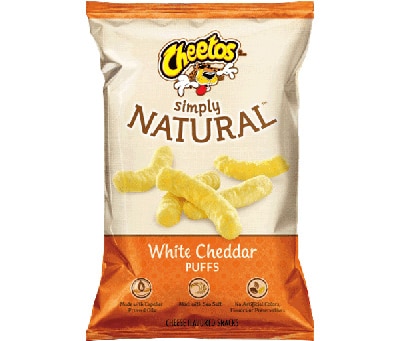
What You Can Do Instead:
‣ Always read nutrition labels and ingredient lists.
Avoid marketing gimmicks by understanding and reading nutrition labels. Always be sure to check the recommended serving size, the grams of sugar per serving (it should ideally never exceed 6 grams) and what kind of ingredients are included.
For example, are the ingredients all foods you recognize, or do they have confusing names such as yellow dye #3, or blue lake #2?
The ingredients on food labels are always listed in descending order of amount by weight, so if a sugar source is one of the first ingredients on a nutrition label, that’s your clue that a “health” product is really just a devil in disguise.
It should also be noted that even if a food product is made from whole grains, the whole grains in processed foods are typically heavily processed, contain GMOs and gluten, and may be mixed with 50 percent or more white flour, which helps food manufacturers save on costs.
16. “Gluten-free” and “organic” doesn’t mean “healthy”
Why This Matters to You:
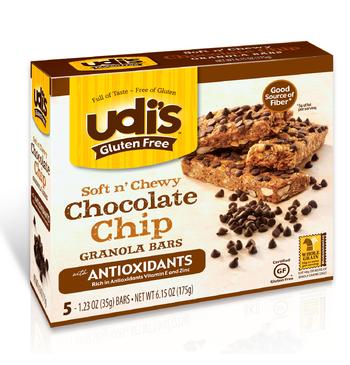
Avoiding gluten is an excellent step to take in improving your health by reducing inflammation, for starters.
But a heavily processed gluten-free food is still no healthier than a heavily processed gluten-containing food.
The truth is, many gluten-free products appear to be healthy, but have just as many grams of sugar, chemicals, and unhealthy fats as their glutenous versions.
The same rule goes for processed foods that are labeled “all-natural” and “organic.”
What You Can Do Instead:
‣ Avoid processed foods (which are mostly boxed and packaged foods).
These are the most common products to contain healthy buzz words. Replace processed foods with whole foods found in nature, such as fruits and vegetable dishes, nuts, seeds, and healthy fats.
‣ Understand nutrition labels.
A common theme in these startling nutrition facts is first knowing what you’re putting into your body by taking the time to read and understand food labels.
As mentioned, it’s important to avoid choosing foods that contain shady sounding ingredients and more than 6g of sugar. The percentage of daily value of sodium and fats a food contains is also important to consider.
17. Most store-bought salad dressings aren’t healthy
Why This Matters to You:
Vegetables are the most nutritious foods on the entire planet, but coating them with dressings laden with salt, rancid oils, artificial ingredients, sugar, and trans fats can turn a healthy vegetable dish into an artery-clogging feast.
What You Can Do Instead:
- Make your own salad dressings at home with quality vegetable oils, such as organic extra virgin olive oil and balsamic vinegar, organic raw honey and dijon mustard.
- When dining out, request lemon wedges, vinegar and olive oil for your salad dressing instead of the options provided by the restaurant.
[Related: 6 Amazing Apple Cider Vinegar Salad Dressings You Need to Try]
18. Whole wheat is just as bad for you as white flour (28).
Why This Matters to You:
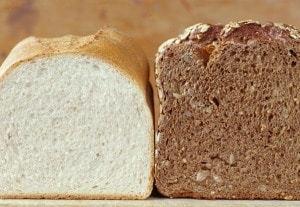
Today, whole wheat nearly has the same glycemic load as white bread, which means it still spikes and crashes your blood sugar levels the same way white sugar does (29).
This is a particularly devastating healthy eating fact because whole wheat is recommended as a healthy, fibrous option for diabetics, or those who are looking to lose weight.
This is why whole or processed whole wheat products such as bread, bagels, tortillas, granola bars and pasta are truly not the health foods they’re disguised and marketed as.
What You Can Do Instead:
Instead of whole wheat, choose minimally processed gluten-free whole grains if you do choose to include grains in your diet. Buckwheat, brown rice, teff, and quinoa (which is actually more of a seed) are the best choices, since they’re packed full of vitamins, minerals, and fiber, which stabilize blood sugar levels rather than spiking them.
19. Agave nectar is no better than white sugar (30).
Why This Matters to You:
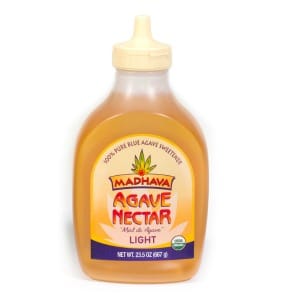
The truth is, agave is extremely high in fructose – in fact, agave contains more fructose per serving than high fructose corn syrup. Yikes.
When large amounts of fructose are consumed at once, it can cause metabolic problems and even damage to the liver and the heart because the body doesn’t metabolize fructose well when it’s eaten in large quantities (31).
Here’s an important point: The fructose in fruit is different than that in agave nectar because it is also accompanied with large amounts of fiber.
What You Can Do Instead:
Avoid using agave. Instead opt for small amounts of pure, organic maple syrup, organic coconut nectar, pure green leaf stevia, or local raw honey. All of these sweetener alternatives can be found at your local health food store, or purchased online through health food retailers.
20. Wheat isn’t the same food our grandparents ate (32).
Why This Matters to You:

While this seems like a positive thing, it has altered the nutritional content of wheat germ and how it reacts in the body.
Today, many people have severe intolerances to wheat – especially to gluten, the protein found in wheat. More research is needed to confirm whether or not gluten sensitivities are related to wheat-breeding (33).
What You Can Do Instead:
To be on the safe side, it’s best to avoid wheat altogether.
I personally recommend limiting your grain intake due to the impact grains have on blood sugar levels. But if you do choose to include small amounts of grains in your diet, try to replace wheat with gluten-free whole grains (such as buckwheat or amaranth) wherever possible.
21. More than 2 billion people have micronutrient deficiencies (34).
Why This Matters to You:
Today, shocking healthy eating statistics from The Centers for Disease Control and Prevention show that at least half the children on the planet between the ages of 6 months and 5 years old have at least one micronutrient deficiency.
Out of the entire population, more than 2 billion people have micronutrient deficiencies (35).
This is a huge problem because micronutrients are what keep us healthy, and are the fundamental nutrients that allow us to even exist here on earth.
It’s no wonder we’re always so tired, taking sick days, and having mental breakdowns due to stress and anxiety. Our bodies simply aren’t receiving an adequate supply of the vitamins and minerals required to handle the daily grind of life.
What You Can Do Instead:
‣ Increase your vitamin and mineral intake by making a vegetable-based green smoothie to start your morning.
Fruits and vegetables are the single best source of micronutrients on the planet.
‣ Taking a high-quality, whole-food multivitamin is one way to increase your micronutrient each day (in addition to having one green smoothie a day), and offer your body a consistent supply of essential nutrients each day.
ArrayEmbed This Infographic On Your Site (copy code below):
Take Action For Your Health
Now that we’ve uncovered 21 of the world’s most shocking healthy eating facts and statistics, we can understand how proper nutrition is still a major problem around the globe.
By being aware of these healthy eating facts and taking action to prevent the problems they can cause, you’re much better equipped to make informed decisions that promote your own health and longevity.
Beat the Odds with Nutrition Power
Looking for easy ways to boost the health quotient of your meals? Check out the real-world-tested recipes in The All Day Energy Diet Community Cookbook. Get 67 quick and delicious recipes that help you look and feel years younger.
You can get it right now – for FREE! – by clicking the banner below.

